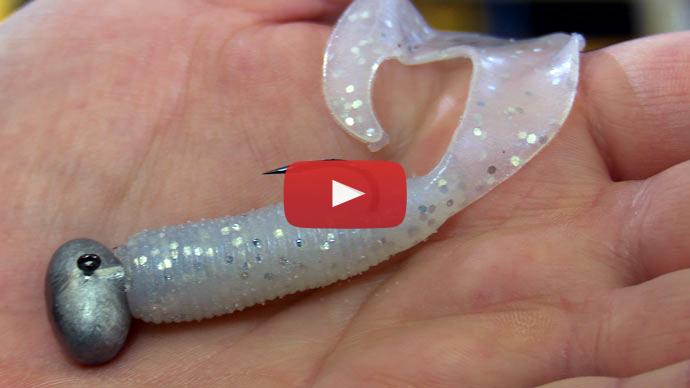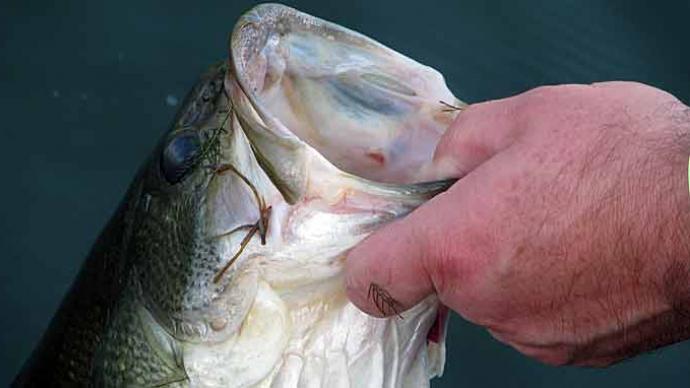Glenn: Holy crap, I can't believe that.
Keri: Fish! Look at that little guy, little buckaroo. Fish!
Glenn: Even after a cold front.
Keri: He was hungry.
Glenn: Hey folks, Glenn May here with BassResource.com, and today I wanna talk about a little pet peeve of mine. It's what I call the myth of deepwater winter bass. You know, if you're watching this video, you've probably seen a number of other videos. As well as if you're researching, you're reading some articles about winter bass fishing and a lot of times they say, "Fish deep, fish deep, fish deep." I've said it, "Fish deep," which there's a lot of truth to that. Bass, in general, as a general rule are deeper than they are, say in the warmer months for a variety of reasons, but the main reason is the baitfish move deeper, and that's where the bass are gonna be. They're gonna chase them, so yes, bass are deeper.
However, I think a lot of people have gone to the extreme to think that the bass are only deep. They never come shallow during the wintertime, and that is a misconception.
That's my pet peeve is that yes, they do come shallow. There are times when they move up. For example, if you have a little warming trend, few days of warm sunshine, and you find a shallow back pocket, what happens a baitfish is struggling to stay alive during the wintertime. The colder the water the temperature is, the higher the likelihood is that they'll die. They really get slow and lethargic, and they start to die off, just a few degrees temperature change is all they need to help them survive so shallow back pockets and coves and bays that can warm up quickly. If you have a little warming trend, the baitfish are gonna go right in there. I mean, they're gonna be attracted to that. Well, like I said, wherever the baitfish are, that's where the bass are. They're gonna follow them.
There are times, for example, if you have that little warming trend, especially if it's warm rain. That warms up the surface of the lake faster than anything else, even faster than just warm sun. You have that, next thing you know bass are up 8 feet, 5 feet deep and they will hit faster-moving lures, believe it or not. I've caught fish on buzzbaits on New Year's Eve, 42-degree water temperature, but on the surface. I've seen them busting fish. It's like, "What is going on here?" It confused me when I first saw that. I didn't really think it was actually bass until I saw one jump out.
It didn't take me long. I had a spinnerbait tied on the deck, and I changed and put on a buzzbait, went out there and made a couple casts and bang, caught some fish. Right? The bass don't always read the same books we do, and they don't have access to YouTube. They do things sometimes that seemed more unorthodox, but if you think about it, I thought about it later and realized, "You know what? We did have a little bit of a warming trend," and there was this long tapering point that it's in vegetation in there, and that's where the baitfish went. The bass went and chased them, so watch for those little things.
Sometimes during the wintertime, you get those little subtle changes in a water temperature, and that's all it takes to move bass up shallow, that and there's also the notion that there are resident bass that just don't move deep during the winter. They'll stay shallow all wintertime, all along. They may not be feeding on those baitfish like threadfin shad, but they'll any perch happened by gobies, things like that. They may be looking foraging for crawdads. Sometimes you'll catch smallmouth or even largemouth during the winter times, and their nose is all red. That's because they're actually shuffling around the gravel, and they're moving it around looking for crawdads. They'll be up shallow doing that so you can catch fish shallow during the wintertime.
That's the point I'm trying to get at is don't draw an imaginary line, say 15 feet, and say, "Okay, I'm gonna fish deeper than that this whole time. I'm not gonna go any shallower." That might be a mistake. You may be missing out on a really good day, so keep that in mind. For more tips and tricks like this, visit BassResource.com.




